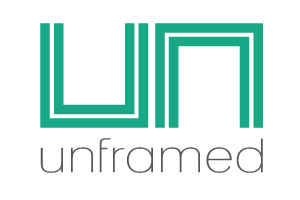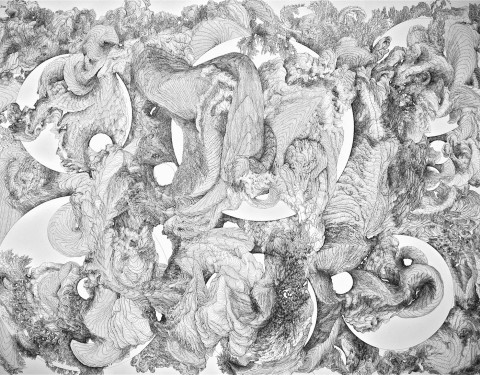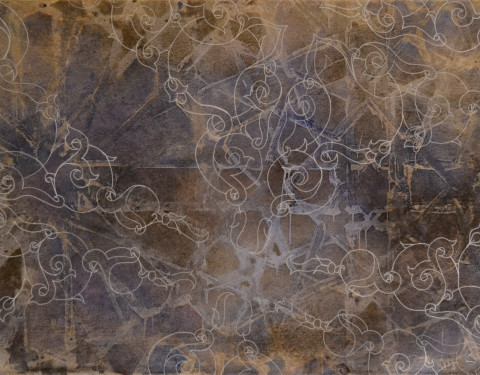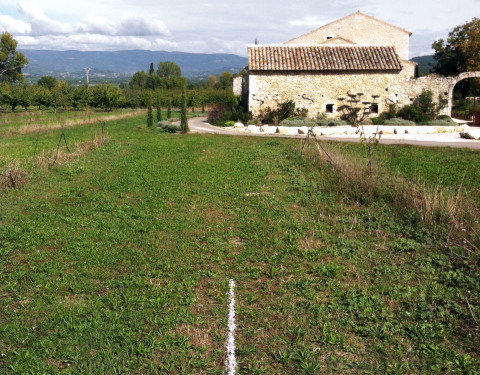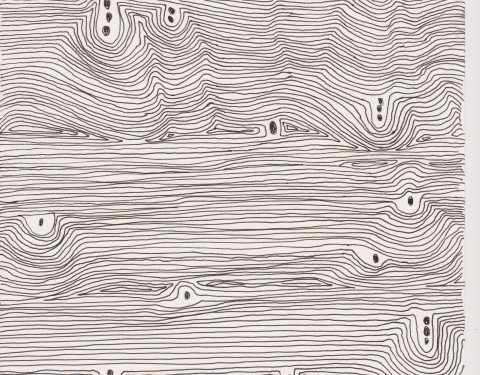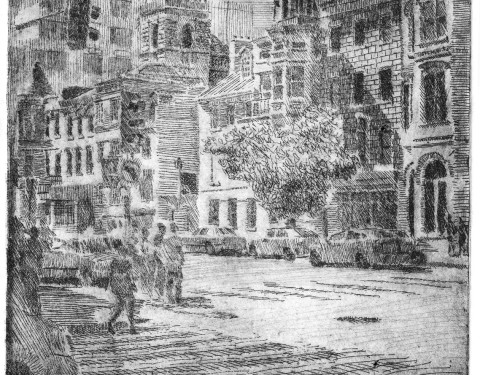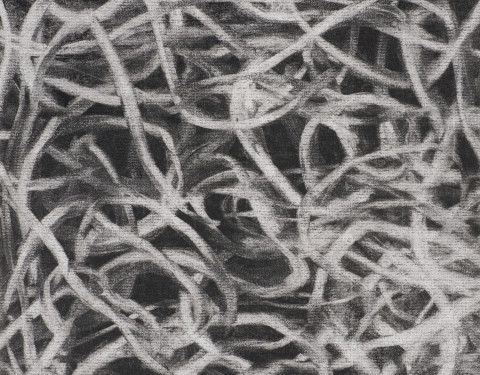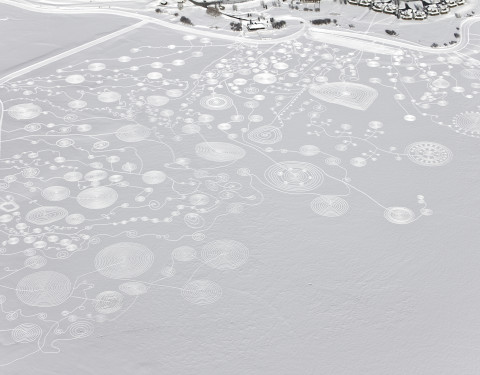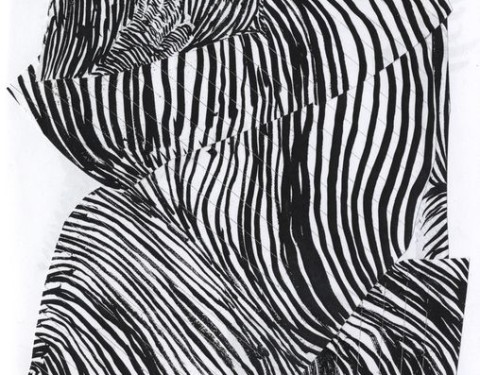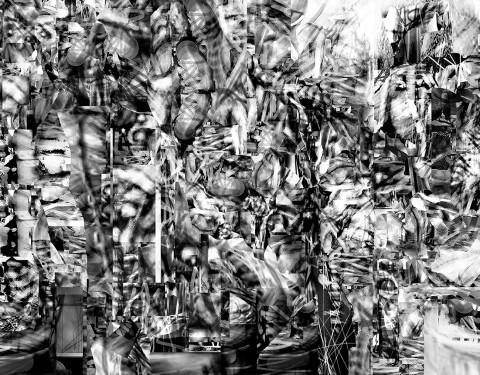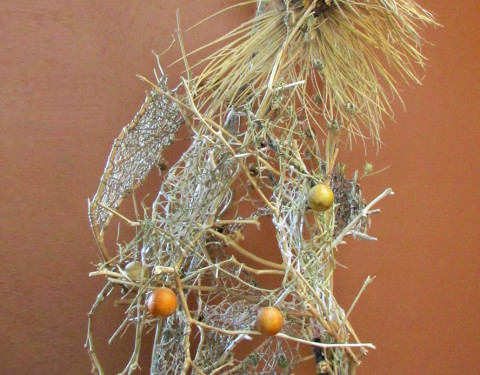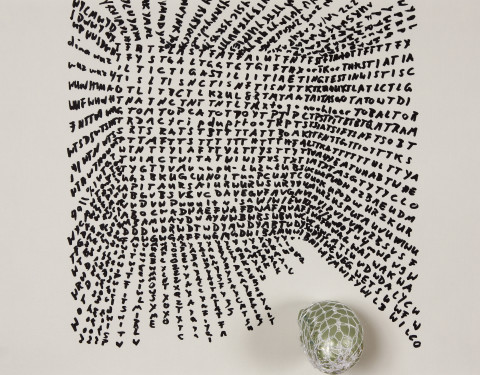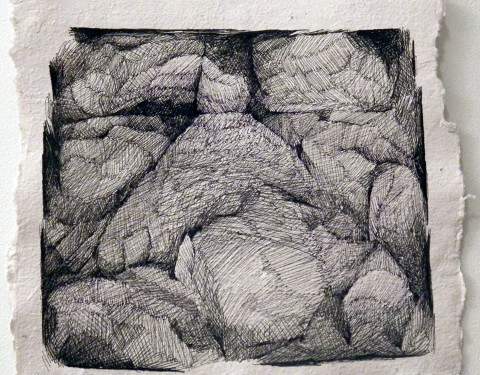More Info
LINE
LINE – Group Show
August 2014
Participating Artists
Ashley ShellHause
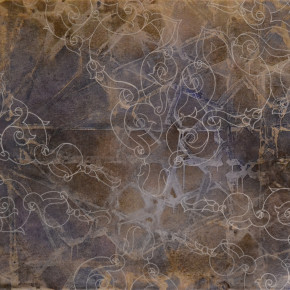
SnS-1 by Ashley ShellHause
The idea for this series of paintings began as I was searching for a way to make abstract art more accessible to a wide audience. My solution was to use my paintings as maps. Specifically, to use them as maps to explain the genetics behind appaloosa horse coloring. Each element in my paintings correlates to a particular gene, so there is a way to decipher the paintings. . http://www.ashleyshellhause.com
Emma Kohlmann
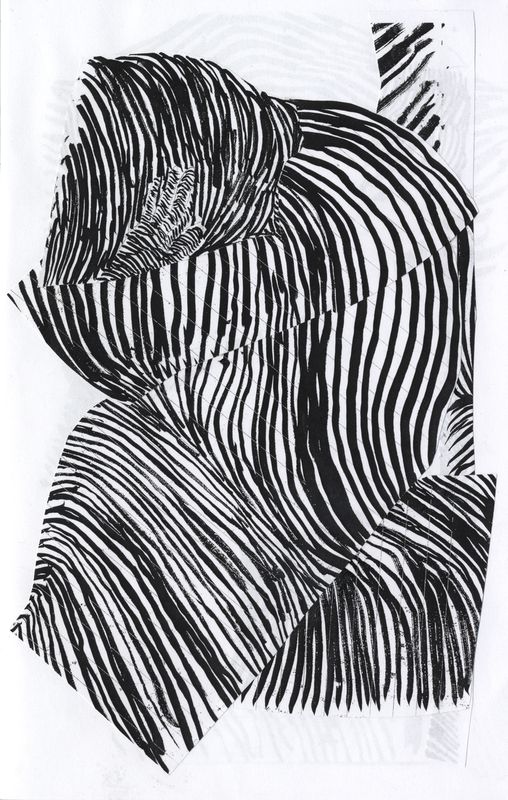
Emma Kohlmann
The work that I create relies heavily on line. I like the build up and the weight of each stride. This collage series speaks to the unstable relationship between the holistic drawing and its decomposition. I made the work in stages. Creating a visual language through each lines density and accumulation. I xeroxed drawings and started to physically break apart each piece. I would use certain segments that I liked and discarded the abject others. The collages become ghost representations of the drawings that once were. Taking on a whole other level of visual meaning that did not previously exist. emmkohlmannart.tumblr.com
Beth Brown
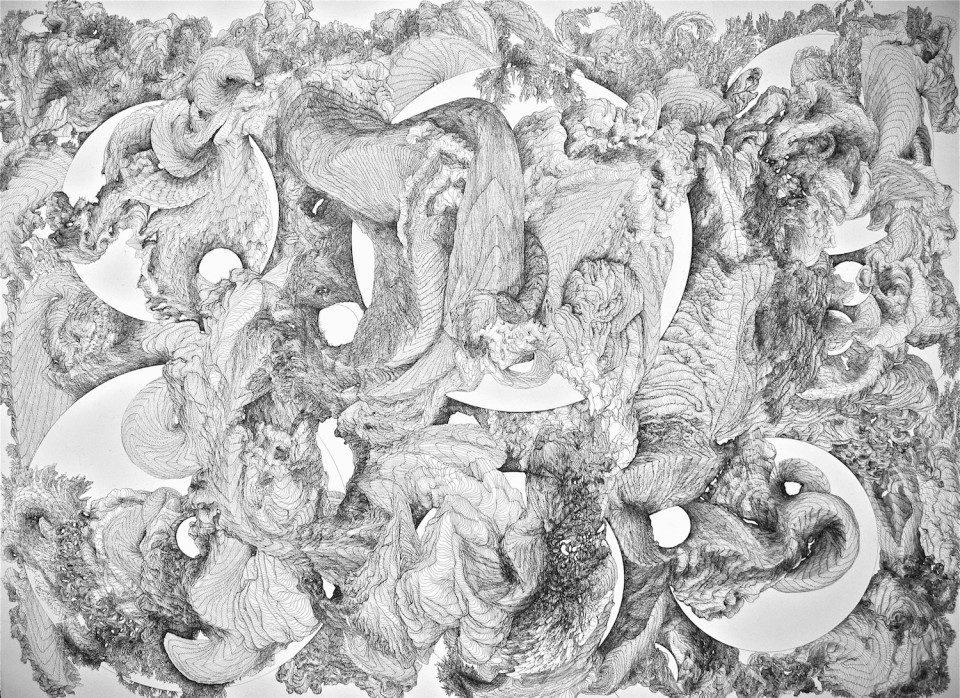
Constriction No.2 by Beth Brown
A draftswoman, composer, and experimental phonographer, Beth Brown works and practices in Baltimore, MD. Her intricate ink drawings and euphonic processed field recordings share a common thread of accumulated texture and detail that create micro-landscapes. These delicate arrangements guide the viewer/listener’s exploration of the vast topographical expanse that exists within each individual piece.http://bethbrownart.com [/two_third_last]
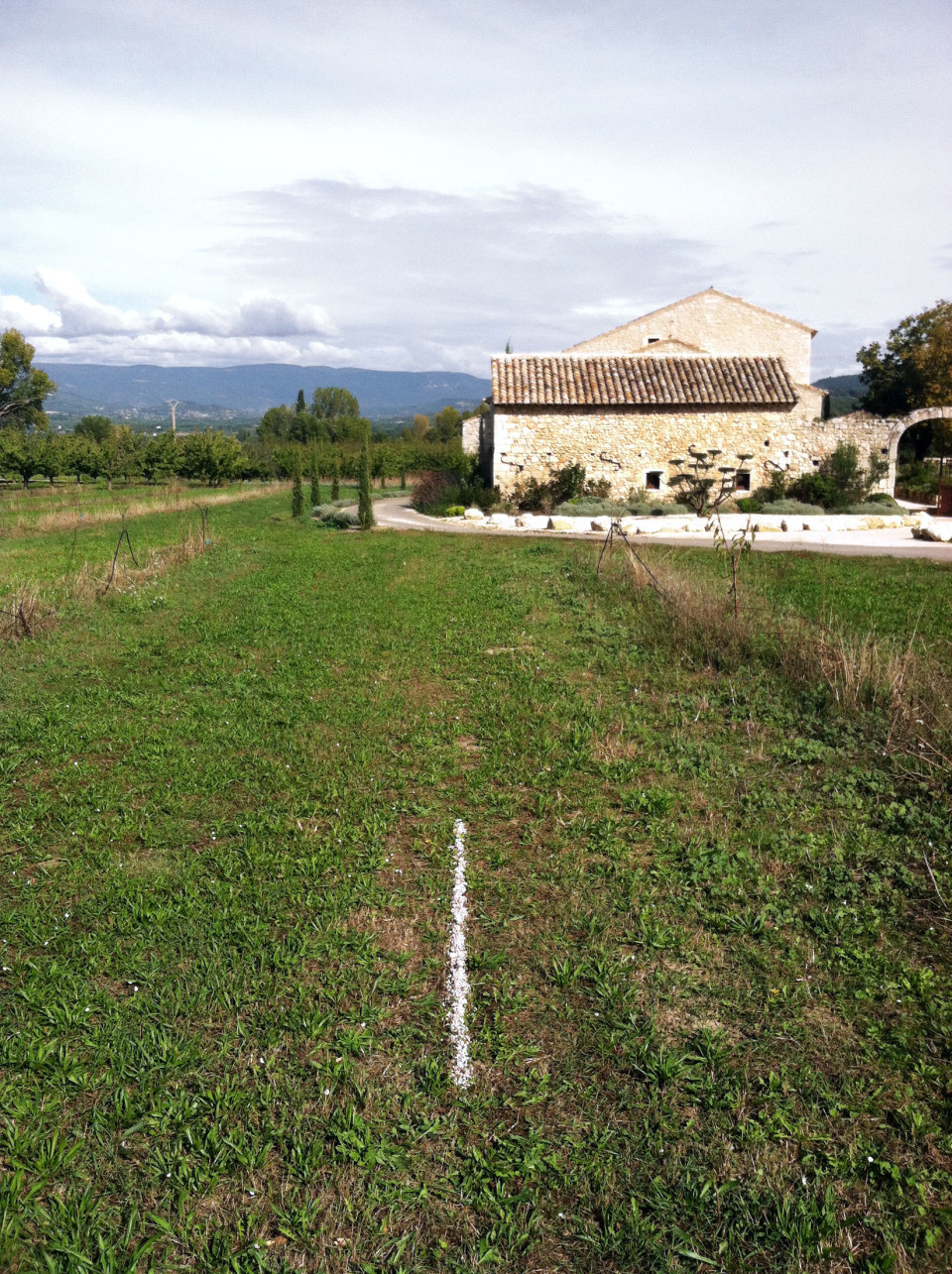 I create ephemeral environmental installations using natural materials that seek to highlight the fragile relationship between humans and the Earth that sustains them. In an effort to critique the traditionally hubristic practice of creating artwork as a concrete and infinite representation of an ephemeral idea, my artwork eventually degrades and decomposes; becoming objects and elements that are no longer art, but are returned to the Earth that originally created them.http://www.collinrichard.com
I create ephemeral environmental installations using natural materials that seek to highlight the fragile relationship between humans and the Earth that sustains them. In an effort to critique the traditionally hubristic practice of creating artwork as a concrete and infinite representation of an ephemeral idea, my artwork eventually degrades and decomposes; becoming objects and elements that are no longer art, but are returned to the Earth that originally created them.http://www.collinrichard.com
Collin Richard

Snails1 by Collin Richards
Jim Pearson
Anonymous Plants VL by James Pearson
The Anonymous Plant series of archival, digital, ink jet drawings are disheveled, awkward and brooding plant studies. In these imagined/constructed images the marks grow intertwined and unpredictable; creating layers of textural surface that become deeper and richer as they are drawn then erased, worked then reworked, constructed then deconstructed. The drawings were not forced in any one direction but were left open and flexible for as long as possible to allow for growth and surprise.
Joanna Schaefer
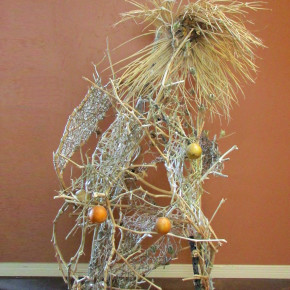
Datura Highway by Joanna Schaefer
In 1969 I began working with line in sculpture. Using twine, rope, wire and reed I constructed three dimensional pieces that were designed either to hang in space or free stand. I worked exclusively with line for over ten years. By 1980 I had started adding other elements to the pieces, specifically: branches, bones and leather.
I now use a wide variety of materials, from bone to styrofoam. Some of my work appears abstract and some appears figurative. To me they are the same; both are my arrangement of form, space, texture, color and attitude. An underlying factor throughout my work is my sense of space derived from landscape. https://sites.google.com/site/2zwrks/home
I now use a wide variety of materials, from bone to styrofoam. Some of my work appears abstract and some appears figurative. To me they are the same; both are my arrangement of form, space, texture, color and attitude. An underlying factor throughout my work is my sense of space derived from landscape. https://sites.google.com/site/2zwrks/home
Kim Taylor
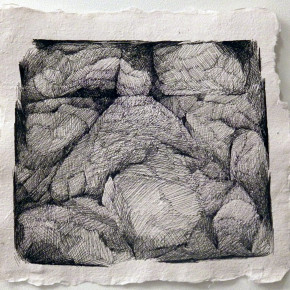
Pathways by Kim Taylor
Most of my imagery is derived from a fascination with the corporeal nature of the body, and I tend to view the human form topographically, much like a landscape. In this way I often accentuate particular body parts to both stylize and contrast paint with a variety of media. For the past year I’ve been occupied by landscapes, mostly imagery observed from odd perspectives and angles, to portray the textural qualities and subtle undulations of the terrain. In observing nature in this way I’ve discovered similarities in the subtle changes in form. I find great connections to the human body. The pen and ink drawings are part of a series I casually refer to as “Land Lines”. The drawings provide a meditative way to focus on nature while exploring the process of mark-making through the rendering of organic forms.http://kimraetaylor.com
Lizette du piesanie
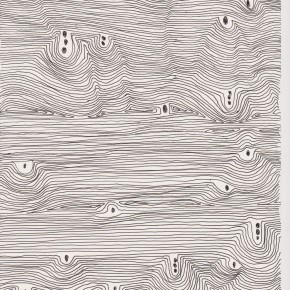
Lewenslyne by lizette du piesanie
I am a spiritual person. I convey the experiences and voice of God through my work. In the last few months I felt an urge to work with the Holy Spirit letting Him guide me in my work and afterwards asking Him to explain it to me. It has been amazing. My work is a communication tool to express what I see, hear and experience in the Spirit realm. http://www.pinterest.com/LizetteduPiesan/lizettes-art/
Peter VanderPoel
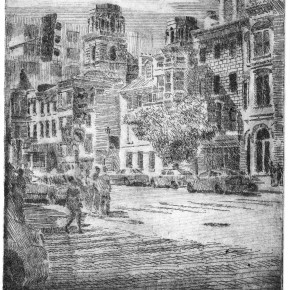
chinatownDC by peter vanderpoel
Etching and drypoint are dependent on the line. The line can hold ink in the tight crevice into which the wet paper goes to retrieve the image. The artist must speak through tiny lines, often laid with help of magnifying lenses, to create an image from a forest of lines. Where the painter might used an outstretched arm and a long brush, the etcher necessarily moves toward the work, immersed in the minute lines to create a holistic image. http://www.pvanderpoel.com
Sandra Doore
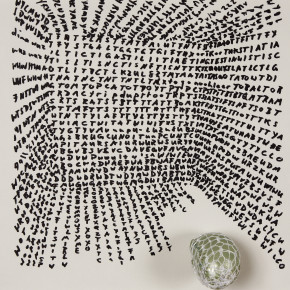
Entities I-V by Sandra Doore
Roland Barthes argues for the inclusion of useless details in realistic text: According to his interpretation, “les detail inutile” seem to render any text more meaningful. “Texting” is based on concepts of abbreviations/acronyms, and the use of incidental details are but a waste of “time and space”. But if useless details are most critical in the creation of meaningful sense than texting, it seems, does not only function on a superficial level but also impacts our sense of being with its dull instant messaging. The works “Lost in Translation I,II and V are part of TANSTAAFL [there ain’t no such thing as a free lunch], a body of work that explores texting and how it affects the sense of self; an investigation/reflection of/on texting and its influences on human psyche, personal relationships and a society as a whole. Desires for instant gratification impacts how we communicate with each other and it is the loss of useless details and the gain of seeing a new language being formed that interests and excites me and that my work attempts to visually capture. The continuous writing out of a list of chat acronyms & text message shortcuts is meant to capture the compulsive nature of this new way of communicating with each other and comments on how interpersonal communications simply get “Lost in Translation”. http://www.sandradoore.com
Sonja Hinrichsen
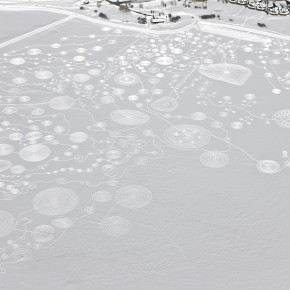
Snow Drawings- Lake Catamount by Sonja Hinrichsen
Snow Drawings is an ongoing project where I “draw” large design systems in the environment by walking lines into fresh snow surfaces with snowshoes. Ideal “canvases” are deforested areas and frozen lakes. The finished pieces are ephemeral. While they take hours to create, their duration is entirely unpredictable. Sometimes they are coated over by new snow shortly after completion. This project began during an artist residency in the Colorado Rocky Mountains in winter 2009. At first entirely out of play, I started designing patterns in my mind, which I then tried to “transfer” onto the snow by walking lines in untouched snow surfaces. As vast fields of snow became huge “canvases”, I became the “pen”. My designs have since become much more elaborate and refined, and I have continued this project in other landscapes across the United States and abroad. http://www.sonja-hinrichsen.com
Tamar Zinn
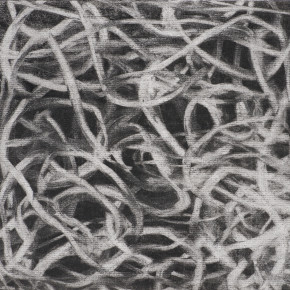
Tangle7 by Tamar Zinn
As a painter, I have pursued increasingly reductivist compositions over the past year, motivated by the desire to create a calm, contemplative space. As a counterbalance to that direction, my studio practice also includes explorations of line and gesture. Tangle is one of several series that have emerged in the past year and marks a significant departure in my work in both imagery and process. These drawings embody an intuitive search for equilibrium — between compression and openness — while balancing rapid, inflected movements with slower, more meditative gestures. They allow for reflection on the space between, as well as the jumble of lines. The drawings of Tangle are each executed in a single work session, moving through the field of charcoal by drawing with a kneaded eraser. My process of mark-making is one of removal, rather than being additive, resulting in an ambiguous interplay between substance and atmosphere. http://tamarzinn.com
Jingxin Geng
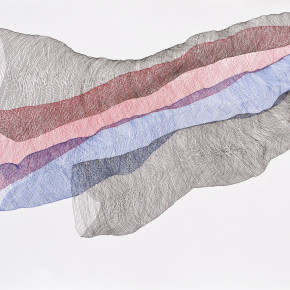
Repetition is to Jingxin the way to discover the foundation of life and reality. In approaching her art through this method she has discovered a way of making the repetition find its own order and discoveries. You can see the mark of Tao’s notion of inaction in the way she works, by not directing the outcome it evolves naturally, which allows the work result to supercede her own limitations of understanding. http://jingxingeng.com
